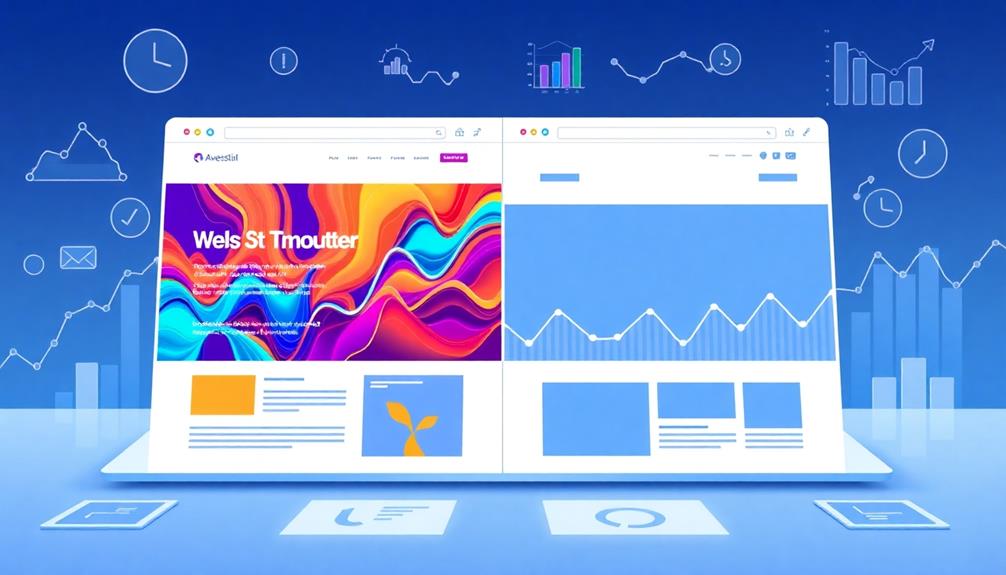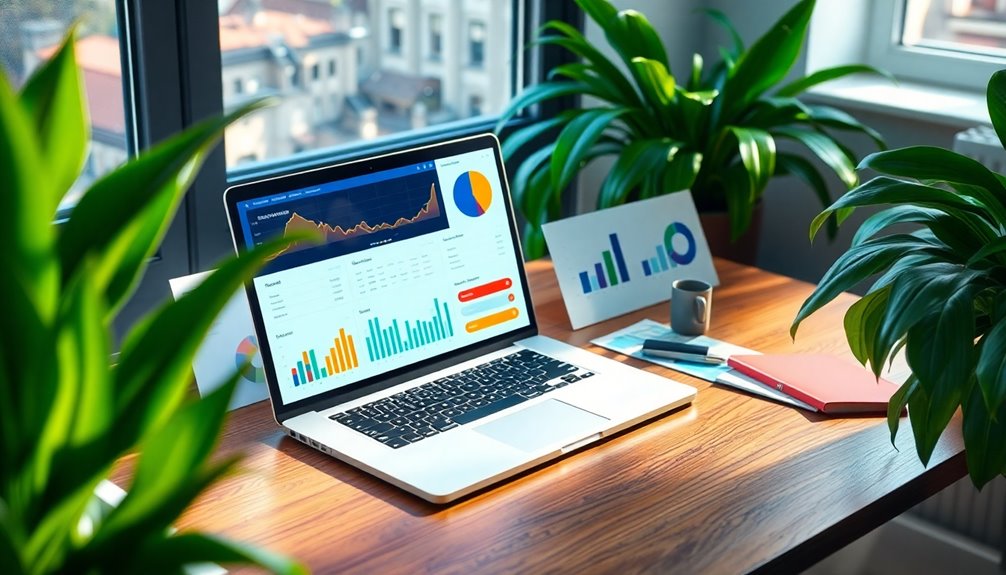A/B testing is essential for improving your digital marketing efforts and boosting conversion rates. By comparing two versions of a digital asset, you can see which one resonates better with your audience. Even small changes can lead to significant improvements, with studies showing increases of 20-30% in conversions. Testing one element at a time allows for clear insights and data-driven decisions. Plus, ongoing testing keeps your strategies fresh and responsive to user preferences. If you want to reveal more secrets to optimizing your campaigns and maximizing results, there's much more worth exploring.
Key Takeaways
- A/B testing enables data-driven decisions that enhance user engagement and boost conversion rates significantly.
- Small adjustments identified through A/B testing can lead to conversion increases of 20-30%.
- Continuous A/B testing provides ongoing insights for refining marketing strategies and optimizing campaigns.
- Testing only one variable at a time ensures clear results and effective decision-making.
- Utilizing robust tools like Google Optimize and Optimizely enhances the efficiency and accuracy of A/B testing efforts.
Understanding A/B Testing
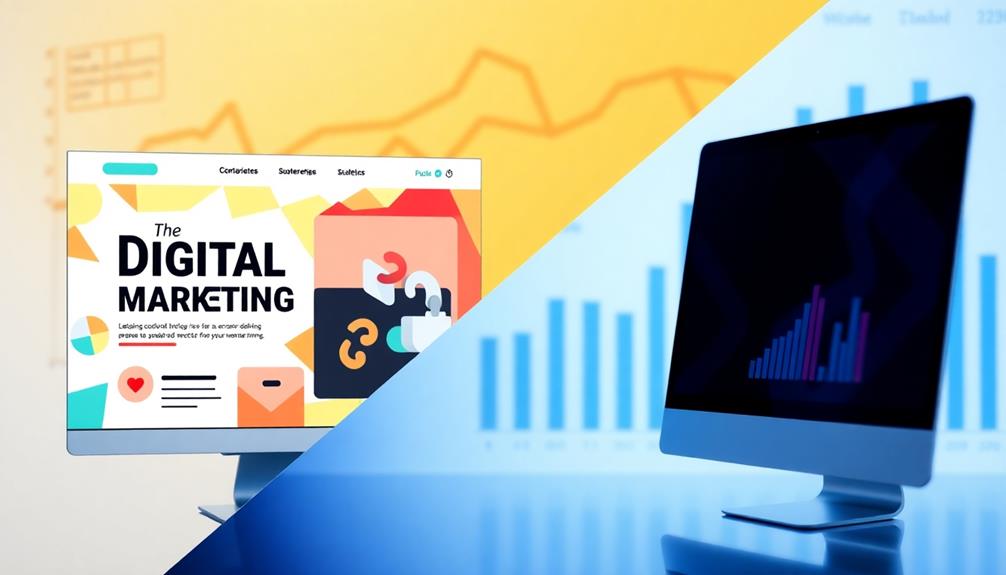
When it comes to digital marketing, A/B testing is a game-changer. This method, also known as split testing, allows you to compare two versions of a digital asset to see which one achieves your marketing goals more effectively. By focusing on one variable at a time, you can formulate a clear hypothesis, similar to conducting a basic experiment.
A/B testing has roots in the 1960s for advertising, but its shift to digital marketing in the 1990s revolutionized how campaigns are optimized. As the digital landscape evolves, embracing AI Online Jobs can also enhance your marketing strategies, offering unique insights and data analysis capabilities.
The real power of A/B testing lies in its ability to greatly improve conversion rates. Studies show that even small changes—like tweaking headlines or calls to action—can lead to increases of 20-30%. Understanding user behavior through analytics data during these tests enables you to make informed, data-driven decisions.
As you implement various marketing campaigns, utilizing effective testing tools helps you analyze results and refine your strategies. This process of campaign optimization not only boosts performance but also enhances engagement with your audience.
Embracing A/B testing means committing to continual improvement, ensuring your digital marketing efforts yield the best possible outcomes.
The A/B Testing Process
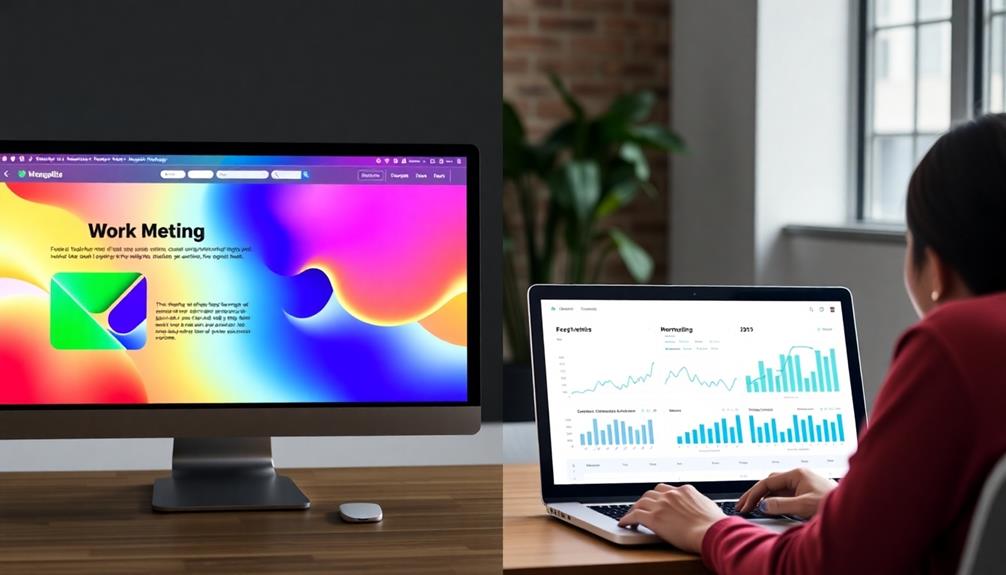
The A/B testing process is a structured approach that helps you identify and implement improvements in your digital marketing efforts.
Start by reviewing your marketing data to pinpoint underperforming elements and set specific goals for your test. Additionally, consider leveraging free SEO keywords acquisition to enhance your content strategy, as targeted keywords can greatly impact your test outcomes.
Next, formulate a hypothesis that proposes changes, guaranteeing it's both testable and measurable. This step is essential for focusing your efforts and defining what success looks like.
Once you have your hypothesis, create two variants (A and B) of the content, altering just one element at a time. This allows you to accurately assess the performance differences between the two.
Then, execute the test through traffic splitting, evenly distributing visitors between the two variants. Collect data over a defined period to achieve statistical significance, which guarantees the reliability of your results.
Benefits of A/B Testing
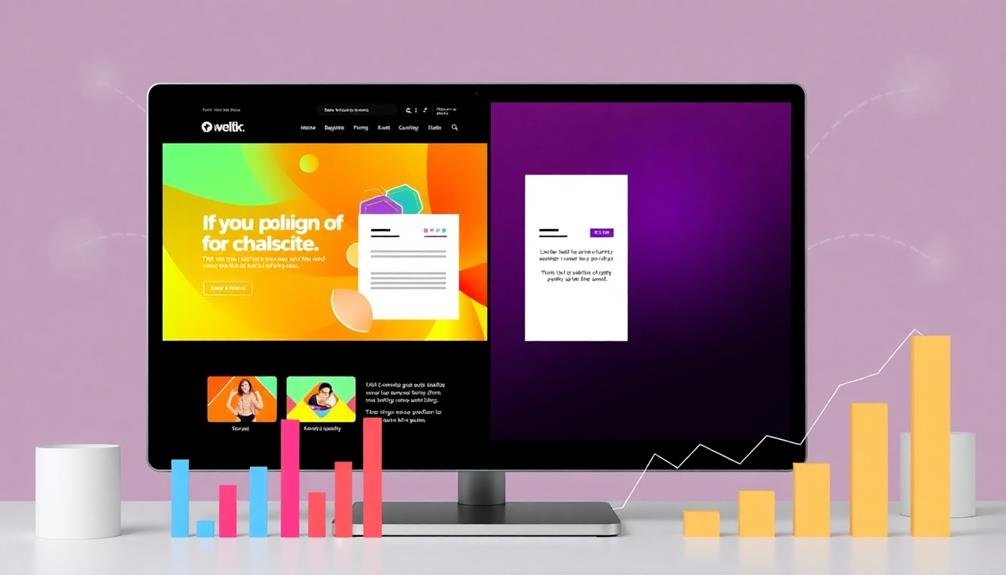
A/B testing offers powerful benefits that can transform your marketing approach.
By making data-driven decisions, you can enhance user engagement and greatly boost your conversion rates.
For instance, just like understanding the mechanics of French press coffee can improve your brewing experience, grasping the nuances of A/B testing can lead to optimized marketing strategies.
Small adjustments can lead to impressive results, proving that every detail matters in your campaigns.
Data-Driven Decision Making
Regularly employing A/B testing empowers marketers to make informed, data-driven decisions that notably enhance their strategies. By validating assumptions about user preferences, you can notably improve user experience and increase customer satisfaction.
Additionally, understanding the importance of getting unstuck can further bolster your marketing efforts by ensuring you remain adaptable and responsive to data insights. Here are a few key benefits of A/B testing in your marketing efforts:
- Boost Conversion Rates: A/B testing can increase conversion rates by 20-30%, revealing which variations resonate best with users.
- Optimize Marketing Budgets: By identifying the most effective content elements, you can optimize marketing budgets and focus resources where they matter most.
- Gain Performance Insights: Continuous A/B testing offers ongoing performance insights, helping you refine marketing strategies and quickly address underperforming campaigns.
With its low-risk nature, A/B testing allows for experimentation without considerable financial losses. You can implement only the best-performing variations, ensuring a smarter approach to your marketing initiatives.
This method not only enhances your overall strategies but also drives better engagement and results. Embrace A/B testing to empower your data-driven decisions, and watch your marketing efforts thrive.
Enhanced User Engagement
When you implement A/B testing, you release a powerful tool for enhancing user engagement. This method allows you to refine content systematically by testing different elements, like headlines and calls to action (CTAs). By identifying which variations resonate with your audience, you can greatly improve interaction rates and keep users engaged longer, ultimately decreasing bounce rates.
A/B testing is an important aspect of a holistic SEO approach as it integrates user experience and content optimization, ensuring that your strategies align with audience preferences.
A/B testing provides data-driven insights that help you eliminate ineffective content, ensuring you focus on high-performing elements. This process not only enhances user satisfaction but also supports iterative improvements, allowing you to adapt to changing user preferences and behaviors.
As you make adjustments, you create a more personalized experience, making users feel valued and understood.
The benefits of A/B testing extend beyond just engagement; with each test, you gather valuable information that helps shape your marketing strategy. By continually testing and refining your content, you create an environment where users are more likely to interact, leading to richer experiences and deeper connections with your brand.
In this way, A/B testing becomes vital for fostering enhanced user engagement and driving long-term success.
Increased Conversion Rates
In today's competitive digital landscape, improving conversion rates is essential for any marketing strategy. A/B testing is a powerful tool that can help you achieve this goal, much like how consistency in content creation leads to audience growth in digital media.
By making minor adjustments—like changing a call-to-action button color—you can see considerable improvements, often increasing conversion rates by 20-30%.
Here are three key benefits of A/B testing:
- Data-Driven Insights: A/B testing provides you with concrete data to identify which elements resonate best with users, allowing you to enhance user engagement effectively.
- Ongoing Optimization: Continuous A/B testing fosters ongoing optimization, ensuring your marketing campaigns evolve with user preferences and behaviors. This adaptability can considerably boost conversion rates over time.
- Validate Assumptions: Instead of relying on guesswork, A/B testing helps you validate assumptions about content effectiveness, enabling strategies that systematically increase conversion.
Best Practices for A/B Testing

A/B testing can be a game changer for your digital marketing strategy, but to get the most out of it, you need to follow some best practices.
First, stick to testing only one variable at a time. This guarantees clarity in results, allowing you to accurately attribute performance changes to that specific element. Additionally, understanding your credit score can help tailor your marketing efforts to specific demographics.
Next, make certain to utilize a sufficiently large sample size to achieve statistically significant test results. A larger sample size increases reliability and reduces the margin of error.
Allow your tests to run their full course, typically between one to four weeks. This timeframe helps gather enough data for informed decision-making while avoiding premature conclusions.
As part of your A/B testing in marketing, it's crucial to document all A/B testing processes, hypotheses, and outcomes meticulously. This documentation provides valuable insights for future tests and tracks performance over time.
Lastly, don't forget to continuously retest and introduce new "challenger" variations to your winning "champion" version. This fosters ongoing optimization and improvements in your conversion rate, guaranteeing your marketing strategy remains effective and responsive to changes in user behavior.
Use Cases of A/B Testing
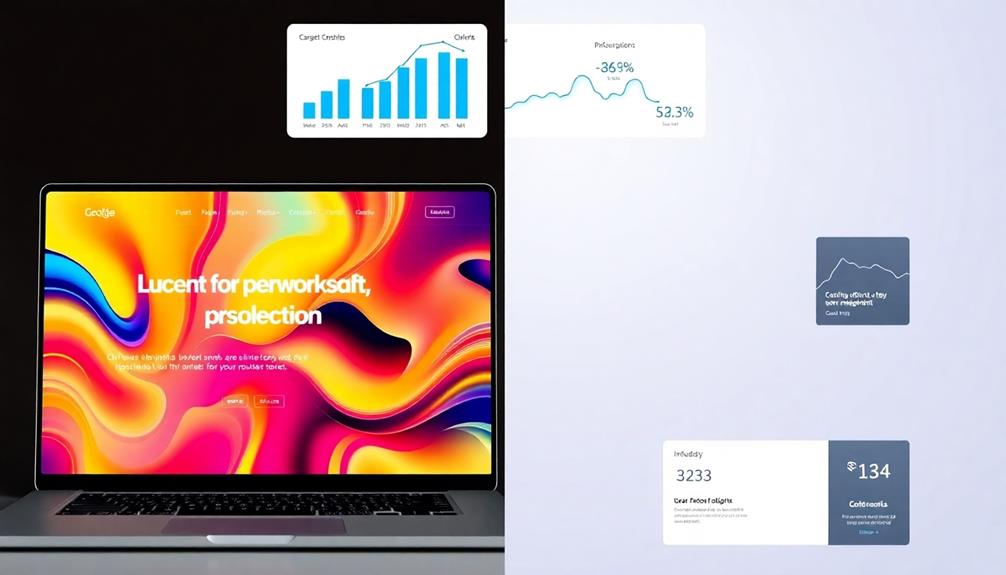
Utilizing A/B testing can dramatically enhance various aspects of your digital marketing efforts. By implementing split tests, you can optimize your strategies to boost your conversion rate and overall effectiveness.
For instance, effective email marketing strategies suggest that testing different subject lines, content, and call-to-action buttons in your campaigns can yield valuable insights. Studies show that personalized emails can achieve up to a 29% higher open rate, making your marketing campaign more impactful.
Here are three key use cases for A/B testing:
- Email Marketing: Test different subject lines, content, and call-to-action buttons. Studies show that personalized emails can achieve up to a 29% higher open rate, making your marketing campaign more impactful.
- Landing Page Optimization: Experiment with headlines, images, and button colors on your landing pages. Effective variations can lead to conversion rate improvements of 20-30%, greatly increasing your chances of capturing leads.
- E-commerce Enhancements: Use A/B testing to refine product descriptions and checkout processes. By doing so, you can lower cart abandonment rates by as much as 10%, which directly translates to higher sales.
Incorporating A/B testing into your digital solutions not only improves click-through rates but also drives engagement and ultimately enhances the performance of your marketing initiatives.
Embrace these use cases to maximize your results!
Tools for A/B Testing

When you're looking to enhance your A/B testing efforts, choosing the right tools is essential.
Leveraging automation in data analysis can greatly improve your testing efficiency and accuracy, allowing for real-time decision-making based on immediate results.
Popular options like Google Optimize and Optimizely offer user-friendly features that cater to all skill levels, while VWO provides budget-friendly solutions.
Popular A/B Testing Tools
In the world of digital marketing, finding the right tools to test and optimize your campaigns can make all the difference. A/B testing is essential for understanding what resonates with your website visitors and can greatly increase your conversion rates.
This process is akin to the importance of personal touches in creating a cozy and inviting workspace, as it allows you to tailor your marketing strategies to better connect with your audience.
Here are three popular A/B testing tools that can elevate your marketing efforts:
- Google Optimize: This free tool integrates seamlessly with Google Analytics, allowing you to conduct A/B tests and track user interactions across multiple variations of a webpage. It's perfect for any marketing agency looking to get started with testing.
- Optimizely: Renowned for its thorough capabilities, Optimizely enables you to perform multivariate tests and offers advanced targeting options. This helps tailor experiences for different user segments effectively.
- VWO (Visual Website Optimizer): A budget-friendly platform offering a suite of conversion rate optimization tools, including A/B testing and heatmaps. VWO helps you understand user behavior and improve website performance.
Each of these tools provides unique features to help you optimize your marketing strategies and engage your audience more effectively.
Choose the right one for your needs and watch your results soar!
Benefits of A/B Testing
A/B testing offers numerous benefits that can transform your digital marketing efforts. By utilizing tools like Google Optimize or Optimizely, you can run effective split tests on your landing pages, ensuring that the changes you make genuinely impact your conversion rate. These tools enable you to evaluate the results accurately, revealing which variations resonate better with your audience.
With VWO's budget-friendly options and Convert's advanced features, you can test multiple elements without breaking the bank. Kameleoon's AI-driven technology further enhances your A/B testing experience by personalizing user interactions in real-time, optimizing campaigns based on actual user behavior. This means you can quickly implement winning variations, drastically reducing the time spent on analyzing results.
The automation capabilities of these A/B testing tools allow you to focus on strategy rather than data crunching. As a result, you can optimize your marketing campaigns more efficiently, ensuring that every decision is backed by data.
Ultimately, A/B testing empowers you to make informed choices that enhance user experience and drive better results in your digital marketing initiatives.
Frequently Asked Questions
Why Is Testing an Important Tool for Digital Marketing?
Testing's essential for your digital marketing success. It helps you understand audience preferences, optimize strategies, and make data-driven decisions. By experimenting, you'll discover what works best, boosting engagement and improving overall campaign performance.
Why Would a Digital Marketer Prepare an a B Test?
You might think A/B testing's time-consuming, but it's essential. By preparing tests, you can pinpoint what resonates with your audience, boosting conversions and ensuring your efforts are based on actual user preferences.
What Is the Benefit of B Testing?
B testing lets you identify which version of your content resonates better with your audience. You'll make informed decisions, boost engagement, and ultimately increase conversion rates by refining your strategies based on real user feedback.
What Is the Purpose of Split Testing in Digital Marketing?
Split testing helps you compare two versions of your digital assets to see which performs better. It identifies what resonates with your audience, allowing you to make informed adjustments that enhance engagement and boost conversions.
Conclusion
In the fast-paced world of digital marketing, A/B testing isn't just a luxury; it's a necessity. While you could gamble with your strategies and hope for the best, why not rely on data-driven decisions that yield real results? By embracing A/B testing, you can transform uncertainty into clarity, leading to higher engagement and conversion rates. So, don't leave your success to chance—harness the power of A/B testing and watch your marketing efforts thrive.

